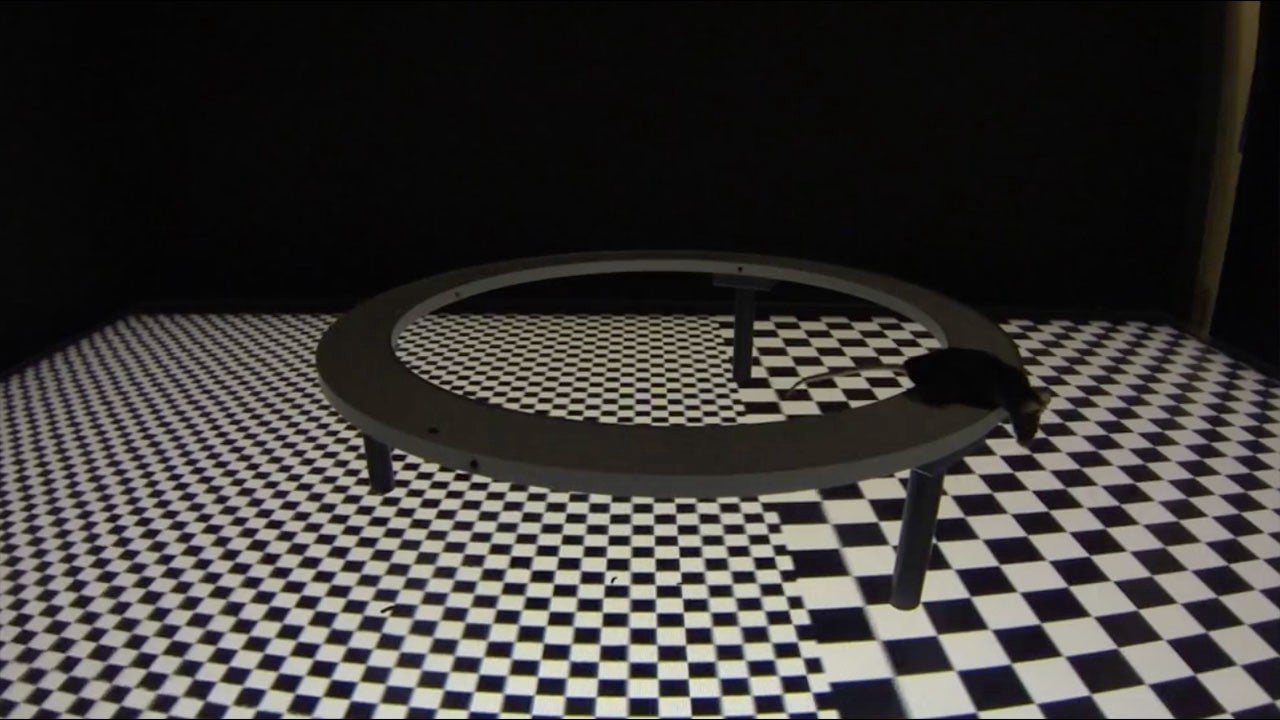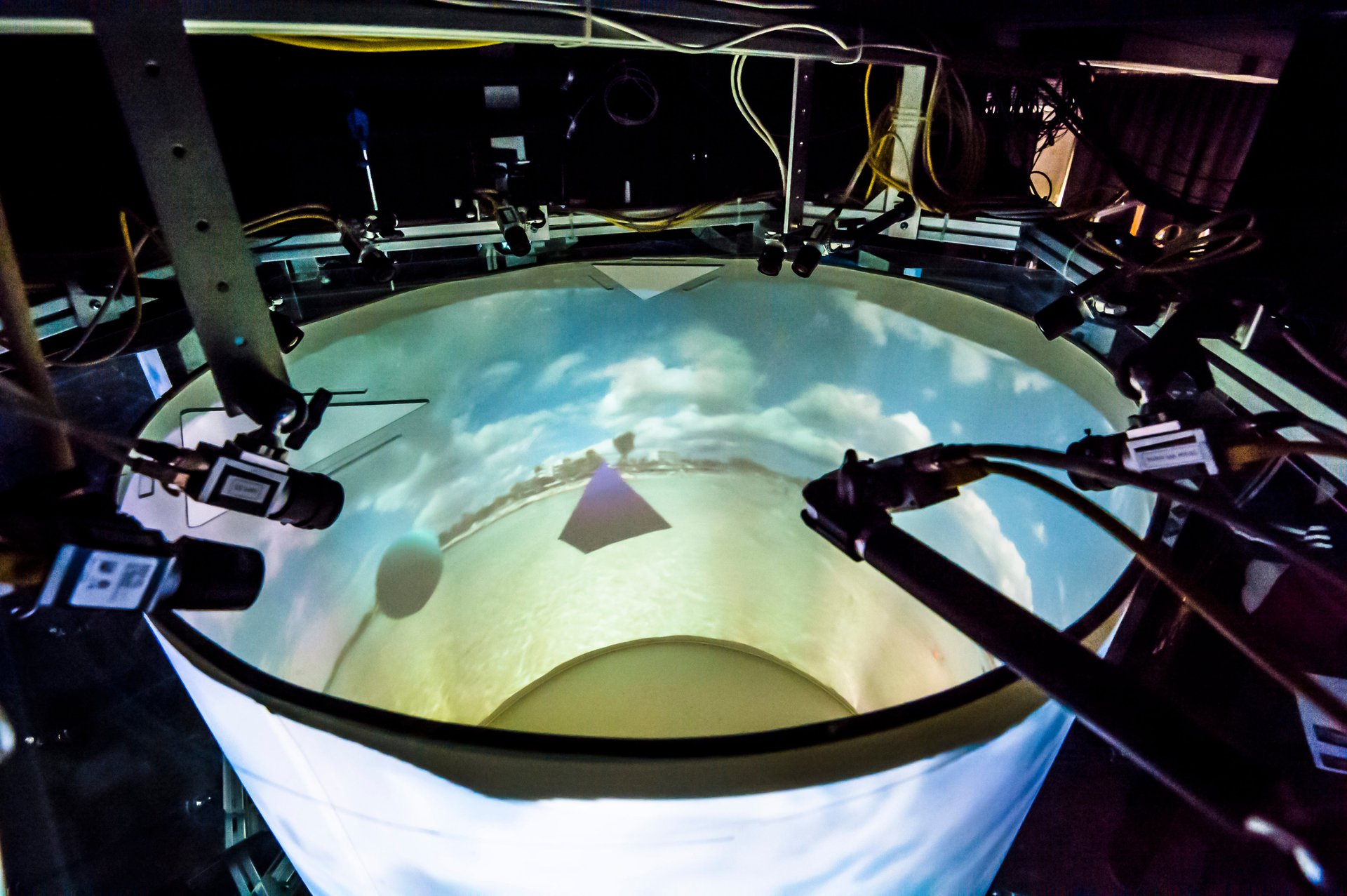Researchers are putting mice, fruit flies, and zebrafish in virtual worlds to better understand their behavior
While virtual reality applications in human research have become commonplace, it’s more difficult to apply the technology to animal research. But the benefits of using VR are manifold. “As a vision scientist, I can create stimuli that just aren’t possible in real life” to discern animal behavior, says Andrew Straw, a professor at the Albert-Ludwigs-Universität Freiburg in Germany. “Being able to exclusively have the visual appearance of something without the odor or touch can also be really revealing.”


While virtual reality applications in human research have become commonplace, it’s more difficult to apply the technology to animal research. But the benefits of using VR are manifold. “As a vision scientist, I can create stimuli that just aren’t possible in real life” to discern animal behavior, says Andrew Straw, a professor at the Albert-Ludwigs-Universität Freiburg in Germany. “Being able to exclusively have the visual appearance of something without the odor or touch can also be really revealing.”
Because it’s impractical to place a heavy VR headset on a mouse and infeasible on a fly or a fish, animal researchers have traditionally surrounded animal subjects with screens that project virtual environments. But such an apparatus required the animals to be constrained to one place, in order to see the virtual world from the right perspective. In neuroscience and behavioral studies, this solution more or less defeats the purpose: Constraining the animal inevitably alters its normal response.
Now a new breakthrough resolves this problem. In a paper (paywall) published in Nature Methods last Monday, a team of researchers, led by Straw and the University of Vienna’s Kristin Tessmar-Raible, has designed a new apparatus that lets the animal roam freely in a virtual world.

The device, called FreemoVR, consists of a circular chamber with walls that are computer displays and a series of 10 high-speed cameras that monitor the animal’s movements and responses to different stimuli. As an animal moves around inside the chamber, the cameras track the exact location of its eyes to create perspective-correct renderings of a virtual world on the chamber’s walls in real-time. “Essentially, the animal is inside a computer game,” says Straw in a Medium article.
In their paper, the research team confirmed that mice, zebrafish, and fruit flies—the three model organisms in neuroscience that crawl, swim, and fly—responded to FreemoVR’s immersive simulations the same way they would to a duplicate real-world environment. In one experiment, for example, fruit flies and zebrafish flew and swam around virtual and real pillars in the same patterns. In another, mice moved through a virtual maze in the same way as a real one.
The researchers also used different case studies to validate FreemoVR’s applications in different types of research. One case study looked at the social behaviors of zebrafish by placing a real one alongside a photorealistically rendered one. Then, by changing the virtual fish’s behavior and watching the real one’s response, they furthered their understanding of how the former’s swimming patterns affected the latter’s. Another more outlandish case study assessed zebrafish decision-making by causing “a swarm of space invaders” to appear or disappear depending on which virtual portal the fish swam through. A third case study tested the fear of heights in mice by placing them on virtual platforms that varied in perceived elevation from the ground.
The results of such FreemoVR-enabled experiments have implications beyond animals. For example, the insights gleaned from these experiments on “how neural circuits associated with place and memory work in rodents are very likely to be highly conserved within humans,” says Straw. Each of these are important for understanding central cognition.
Tessmar-Raible and Straw’s team aren’t alone in developing a free-moving VR system. Anton Sirota’s lab at the Ludwig Maximilian University of Munich also converged on a technological solution. (His paper is still in the process of being published.) In the mean time, Tessmar-Raible and Straw have open-sourced FreemoVR so other researchers can benefit. “Hopefully,” says Straw, “our system is a useful step.”